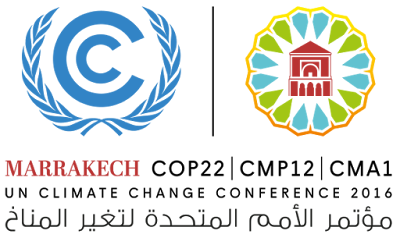Tuesday, November 8, 2016
The Rest of the (News) Story in 2016
For the past year (it seems like so much longer), the airwaves in the United States have been dominated by campaign noise. Occasionally, this noise has been punctuated by some actual news such as the stories about Hurricane Matthew, the struggle of refugees coming from war-ravaged areas, and forest fires in the western states or the central U.S. (and if you pay attention to international news, Siberian boreal forests). In case you had not thought about it recently, Haiti is still in ruins after Hurricane Matthew, described just last week as a “blighted apocalyptic landscape of wrecked homes and growling hunger.” And you may have missed them with all the campaign static, but there have also been several news stories related to climate change, besides the ones I mentioned above.
In October, there was a historic agreement reached to cut hydrofluorocarbons (HFCs) – avoiding the release of significant amounts of CO2-equivalent emissions. In 2015, reports indicated that there had been a dramatic rise in HFC emissions between 2007 and 2012 due largely to air conditioning – an increase of around 33 million tonnes per year of this very powerful greenhouse gas. The Kigali Agreement will cap and phase down HFC consumption starting with developed nations in 2019.
On November 4th, the Paris Agreement, negotiated at COP21 in 2015 went into force (i.e. became international law). This is the first agreement were all countries have specific pledges to reduce greenhouse gas emissions. As of November 8th, 102 (of 197) countries have ratified this agreement which has as one key goal to limit planetary warming to below 2°C over the pre-Industrial levels.
Yesterday (November 7th) COP22 began. Under the United Nations Framework Convention on Climate Change (UNFCCC), Parties or signatories of the 1992 agreement are committed to address the global problem of climate change. At the annual Conference of the Parties or COPs, multilateral negotiations related to climate change policies occur. You may wonder why this group needs to continue to meet if so much progress was made last year. Part of the answer to that question is that the current commitments of individual countries to reduce greenhouse gas emissions are insufficient to meet the planetary temperature goal of the Paris Agreement. These intended nationally determined contributions (INDCs), when added up, are projected to only limit warming to around 3.5°C, and that is only if the countries actually abide by their pledges.
A goal of continued negotiations then is to get deeper cuts in emissions, to have countries move towards these more ambitious cuts sooner, and to have the conversion to a low carbon future in order to limit warming to, not 2°C, but rather to 1.5°C. Scientific models show that the 1.5°C warming limit may – just may – limit sea level rise associated with climate change so that it won’t completely drown out several small island nations and coastal communities. To get there, not only will each country need to be more ambitious with their INDCs, but the Parties will also need to address emission sources not currently covered such as the bunker fuel emissions from maritime shipping in international waters.
Monitoring and verification mechanisms, carbon markets, adaptation, and finance related to both loss and damage due to climate change impacts and technology development needed to green our national economies are just a few of the other issues that need to be addressed in negotiations. It is only day 2 of COP22 and I have already heard much more about geoengineering and negative carbon emissions (reducing CO2 from the atmosphere) than usual. With my science background, these terms are code for “plan B” to save the planet. To others, they are terrifying concepts of hubris, our belief that our technological developments can “fix” everything.
I suspect that the reason for the increased emphasis on technological "solutions" may be due to some other pieces of news that have likely gotten lost in the campaign noise. Last year, 2015, was the warmest year globally on record and we crossed the 1°C mark for global average temperature increase. For the first three months of 2016, the global average temperature was hovering around 1.2°C warmer than pre-Industrial times. Sea level rise is occurring faster than any time in the past 2800 years. And we learned that the 2011-2015 mean September sea ice extent was 30% below the 1981 – 2010 average. This information is not from models, but from actual scientific measurements. Perhaps the scariest headline from all of this is that scientists believe it may now be impossible to limit global warming to the 1.5°C target.
These are very big news stories that may be linked to severe weather events and conflict happening around the world. But despite the importance of these issues, they apparently were not significant enough to be discussed in any detail during the presidential debates, and at best, were a blip on the evening news.
Today, those annoying political ads will end. For days or weeks after the election, Americans will come to grips with the outcome of a contentious election, and political pundits will analyze what it all might mean. What likely won’t be in the news during that time is that thousands of people from 197 countries will be in Marrakech for two weeks trying to save humanity from a very real crisis that is happening regardless of which national leader is elected back in the United States.
Labels:
campaign,
climate change,
COP22,
election,
Haiti,
Hurricane Matthew,
INDCs,
Marrakech,
Paris Agreement,
sea ice,
sea level rise,
UNFCCC
Subscribe to:
Post Comments (Atom)


No comments:
Post a Comment